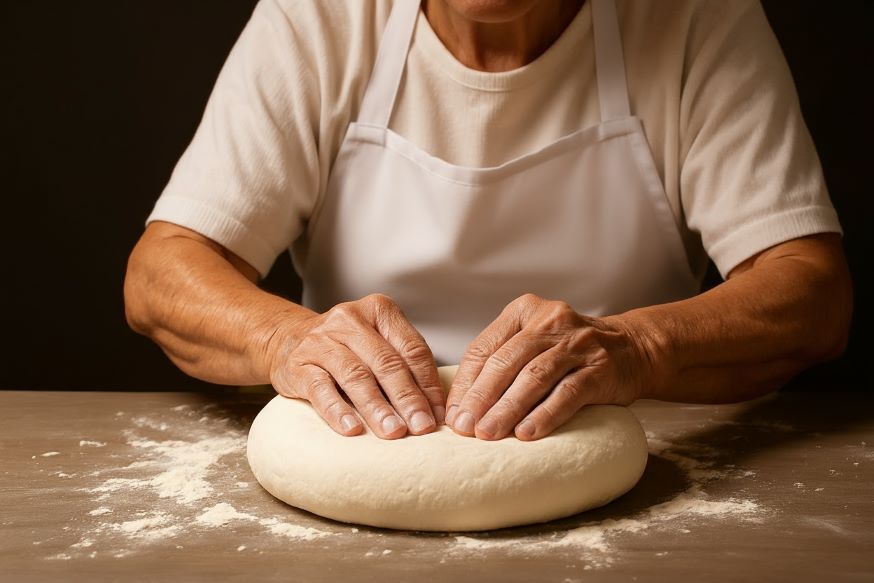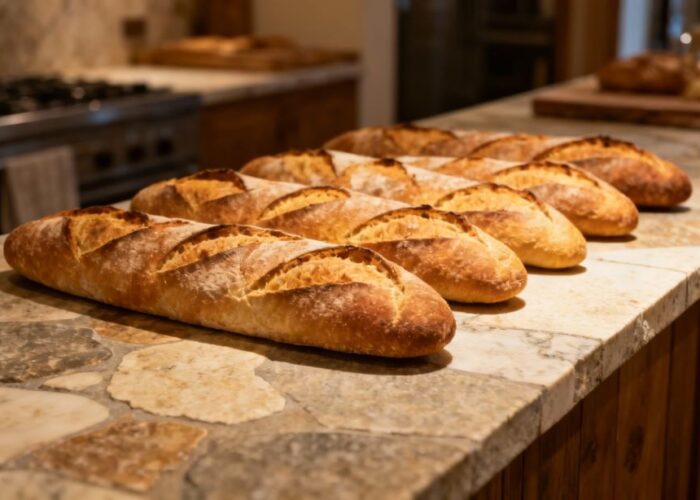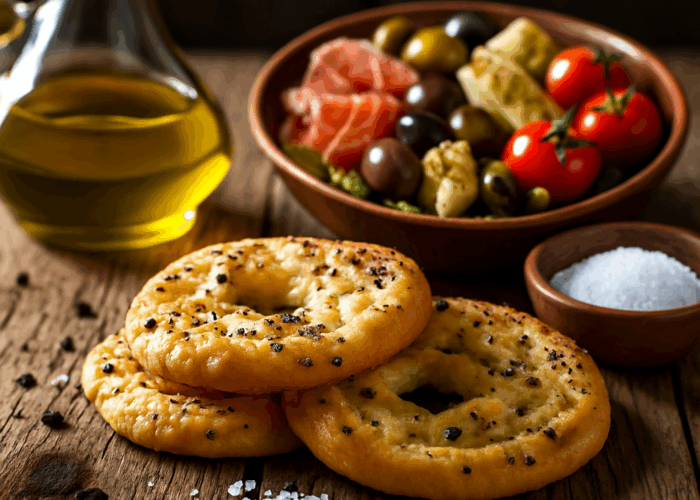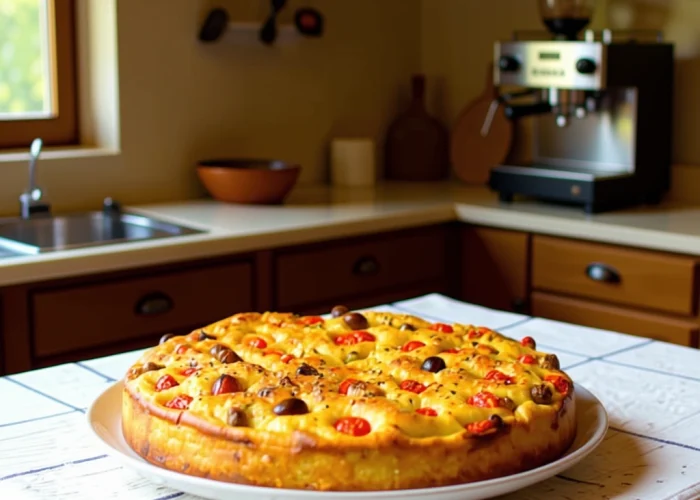Pane Toscano: The Heart of Tuscany in a Loaf
Pane Toscano isn’t just bread it’s a story you can taste. Rustic, simple, and unsalted, this Tuscan classic has a gentle, earthy flavor that pairs perfectly with the bold, hearty foods of the region. Every slice carries centuries of history, tradition, and a little Tuscan pride.
Centuries ago, salt was expensive and hard to come by. Tuscans didn’t panic they adapted. Bakers started making bread without salt, and what began as a practical solution quickly became a beloved tradition. Today, Pane Toscano is a symbol of resourcefulness and the Tuscan way of life. Its unique flavor paired perfectly with the bold, salty, and peppery foods of the region from pecorino cheese to prosciutto and robust olive oil. Even today, the tradition lives on, and the bread is still baked the old-fashioned way, maintaining the centuries-old balance between simplicity and flavor.
What Makes Pane Toscano Special
No Salt, Big Flavor: Its mild taste lets the natural sweetness of the wheat shine.
Crust and Crumb: A crunchy, golden crust gives way to a soft, airy interior, perfect for tearing, dipping, or layering.
Culinary Versatility: Fresh or a little stale, it’s the backbone of Tuscan classics like panzanella (bread salad) and ribollita (hearty vegetable soup).
Pane Toscano reflects the Tuscan philosophy of cucina povera cooking that values honesty, simplicity, and respect for ingredients. It’s not fancy, but it’s unforgettable. Pair it with peppery olive oil, salty prosciutto, or tangy pecorino cheese, and you’ll understand why this humble bread has stayed on tables for centuries.
Each loaf of Pane Toscano carries the soul of Tuscany. It’s simple, honest, and a little rebellious, proof that flavor doesn’t always need salt to make a lasting impression. Eating it is like touching a piece of history, a connection to generations who cherished food, family, and the land.
The Hidden Value of Stale Pane Toscano
In Tuscany, nothing goes to waste, especially bread. A loaf that’s a little past its prime isn’t thrown out; it’s transformed. Tear it into chunks and let it soak in a steaming bowl of ribollita soup, where the bread soaks up the hearty flavors of beans, vegetables, and olive oil, turning leftovers into something comforting and soulful or toss it into panzanella, a vibrant bread salad where juicy tomatoes, crisp cucumbers, fresh herbs, and a drizzle of olive oil make every bite sing.
In the hands of a Tuscan cook, even yesterday’s bread becomes more than sustenance. It becomes a celebration of flavor, tradition, and creativity. It’s a gentle reminder that good things often get better with time.
Flavor Twists
While traditional Pane Toscano is celebrated for its simplicity, you can gently experiment without losing its rustic charm. Add fresh herbs like rosemary, thyme, or sage to the dough for an aromatic lift. A handful of olives or sun-dried tomatoes can bring bursts of savory flavor. For a slightly nutty touch, try mixing in whole grains or seeds like sesame or sunflower they add texture and a subtle depth to the bread.
Storage
Pane Toscano is best enjoyed fresh, when the crust is crisp and the crumb is soft. Store it in a paper bag at room temperature for 1–2 days to maintain that perfect texture. Avoid plastic bags, which trap moisture and soften the crust.
If you need to keep it longer, slice and freeze the bread. When you’re ready to enjoy it, simply toast or warm the slices, they’ll taste almost as fresh as the day they were baked.
Even slightly stale bread has its charm. It’s soaks up flavors.













